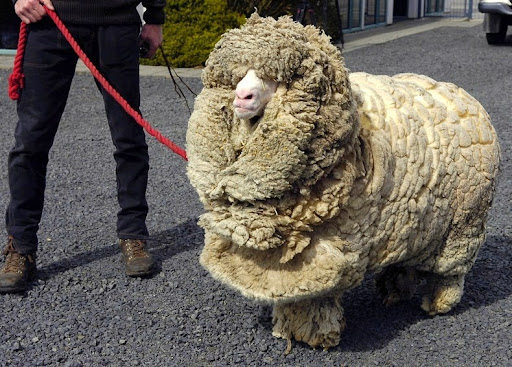Good Ideas On Choosing Merino Wool Base Layers For Hiking
Wiki Article
What Is The Main Difference In Merino Sheep And Other Breeds?
Merino sheep are different from other types. Merino sheep also have fine wool. Merino's wool is softer and more fine than other sheep breeds. Merino wool is highly valued for its versatility and warmth.
Adaptability: Merino sheep are very adaptable to all kinds of climates and environments. They can thrive in both hot and cold climates and are able to withstand a range of temperatures.
Resilience- Merino lambs are well-known for their strength. They are resistant to most sheep diseases and can withstand extreme weather conditions.
Fertility- Merino Merino sheep are blessed with high fertility rates and can produce multiple offspring from a single pregnancy.
Merino sheep have unique habits of grazing that help them maintain their health. They graze in a careful and selective way that allows them to avoid excessive grazing and toxic plants.
BreedingThe breeding process Merino sheep are often selectively bred to create the finest quality wool. The result is the wide range of Merino sheep breeds, each with its particular characteristics and distinct qualities.
Merino sheep have a long tradition of being highly sought-after for their fine, flexible, resilient wool, as well as other distinctive characteristics. They are a vital resource for the wool industry, and are highly valued by breeders and farmers across the globe.

What Is The Basis Layer Of Merino-Wool Merino Differ For Mediumweight, Lightweight And Heavyweight?
The fabric's texture and warmth are the key differences between light, midweight and heavyweight Merino wool base layers. Here is a breakdown on the distinct differences between the three types. Lightweight Merino base layers are constructed from a breathable, thin fabric. This fabric is great for cool to mild temperatures. This type of base layer is perfect for intense activities in which you are likely to sweat an sweat and require a fabric that can wick away the sweat and keep you cool. It can be used in colder conditions as a base layer underneath other layers.
Midweight Merino wool baselayers are constructed from a thicker fabric, that provides more insulation as well as warmth than light base layers. This base layer can be utilized in cold or hot weather conditions. It is an excellent choice for those who do moderate intensity activities or who don't sweat much.
Heavyweight Merino wool base layers are made of the most warm and dense fabric and are designed to be used in extremely cold weather conditions. This type of base layer is ideal for activities that require low intensity and don't expect to sweat out like skiing or snowshoeing.
When choosing the most appropriate Merino wool base layer for your needs, consider the weather conditions and level of activity you will be participating in. A light base layer is best for activities that are high-intensity and in mild or cool conditions. While a medium-weight base layer can be used for activities that are cool or cold, and with a moderate to low intensity, it is great for activities that involve the highest levels of intensity. For activities that require low intensity and extremely cold weather, a thicker base layer is recommended. Be aware that you can layer up or down according to the conditions It is recommended to select a layer that's slightly heavier than too heavy. Additionally, consider the size of your base layer and ensure it's comfortable and allows for a the full range of movement. Go best base layers online store for website examples.

How Do You Find The Ideal Ski Base Layer To Combine Merino Wool And Himalayan-Yak Wool?
There are many aspects to think about when choosing the ideal ski base combination from Merino Wool as well as Himalayan Yok Wool. Here are a few key factors to consider. Weather conditions- Consider the weather and temperature you'll be skiing. If it's extremely cold, you might want to opt for base layers that have greater insulation, like one that includes Himalayan yak wool. Lighter Merino wool base layer may be appropriate for milder weather.
Activity levelIt is a measurement of your level of activity and how much sweat you shed. Merino wool is a good option for people who sweat a lot.
Comfort- Choose an appropriate base layer that is comfortable and fits well. Base layers should be capable of moving with you and provide full movement. Avoid any base layers that feel too restrictive or tight. This can cause discomfort and limit mobility.
Personal preference - In the final, it'll all depend on your personal preference. A base layer with greater insulation may be preferred by some , while others prefer a thinner layer. Try different combinations to determine what works best to meet your needs.
It is important to think about your individual needs and the conditions you'll be skiing. When selecting the right base layer, you should consider the weather conditions, your activity level, and your personal preferences. This will ensure that you stay dry and comfortable while you are on the slopes. Go top wool clothes at koraoutdoor.com for more tips.

Merino And Himalayan Himalayan Yak Wool Are Superior To Cotton Nylon, Polyester, Fleece, And Other Alternatives To Skiwear.
Merino, Himalayan, yak, and nylon ski clothing are superior to those constructed from polyester, cotton and nylon. Warmth- Merino, Himalayan, and Himalayan Wool are extremely efficient insulators that keep you warm during cold weather. Merino Wool as well as Himalayan Yok Wool are superior in insulation.
Moisture management- Merino wool and Himalayan Yak wool are extremely efficient at managing moisture which means they ensure you are dry and comfortable during your ski trip. Both wools are naturally moisture-wicking. This means they draw moisture away from your skin, and then move it into the outer layers of the fabric where it can evaporate. This contrasts with cotton which absorbs humidity and can become uncomfortable and heavy when wet.
Breathability- Merino wool as well as Himalayan yak wool are highly breathable, which means they let air circulate through the fabric. This helps regulate body temperature and prevent overheating. This is crucial when it comes to ski clothes, as it lets you remain at ease while you're ski. However the nylon, polyester and fleece aren't as breathable and can hold in moisture and heat and make you feel hot and uncomfortable.
ComfortComfy Merino, Himalayan and yak wools are extremely soft and comfortable. They are stretchy and flexible and are able to move with you and allow to move freely. While nylon, fleece, polyester, and nylon are uncomfortable and restrict your mobility, they can also cause discomfort and chafing.
Sustainability: Merino wool and Himalayanyak wool are both natural and sustainable fibers that are reusable and biodegradable. They are also more eco-friendly than synthetics such as polyester or nylon that are constructed from non-renewable resources and require a longer time to decompose.
Overall, Merino wool and Himalayan yak wool offer a range of advantages that are superior to cotton, polyester and nylon for ski clothes. They are warm waterproof, durable, breathable and comfortable. They are an ideal choice for anyone seeking to remain at ease when skiing.